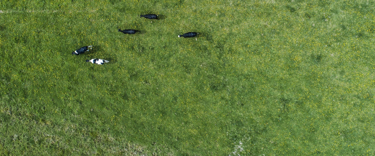Targeted by scientists

Arla’s farmer owners are already among the most climate friendly dairy farmers in the world.
Since 1990, Arla farmers have reduced emissions per kilo of milk by 24 per cent. The CO2e reduction from Arla’s operations, including packaging and transport, has been 22 per cent since 2005 – even though Arla’s milk intake since then has grown by over 40 per cent. As such, the milk produced by Arla use less than half the average of emissions per litre compared to global dairy production.
Now Arla has a clear ambition to fight climate impact. Together with scientists and researchers from CDP, World Resources Institute (WRI), the World Wide Fund for Nature (WWF), and the United Nations Global Compact (UNGC) Arla has targeted its goals: To reduce the carbon emission by 30 per cent by 2030 and have a neutral climate impact by 2050.
To reach our goal, Arla has introduced a new Climate Check programme and comprehensive support to all our 9,900 farmer owners in Northern Europe. With the Climate Check programme, it’s our aim to triple the speed of CO2e reductions across seven countries and accumulate one of the largest sets of externally verified climate data.
Together with Arlagården, a digital documentation database introduced in 2018, the tools will help the individual farmer to systematically measure and benchmark the farm performance. Arlagården was first introduced in Denmark in 2013 and has proven efficient. The Danish farmer owners who have used it since 2013 have shown that it can help reduce carbon emission by up to 4 per cent per year.
With these digital tools, Arla farmers are now registering data from 96% of Arla’s milk pool in the system on a quarterly basis. For example, data about their herd, milking system, feed, grazing, land use and animal welfare. As a result, we now have one of the largest dairy farm benchmarking datasets in Europe. And the data collected doesn’t only help the farmers to identify where there’s room for improvement, it’s also a great tool for researchers and NGOs in Sweden, Denmark, Germany and the UK.